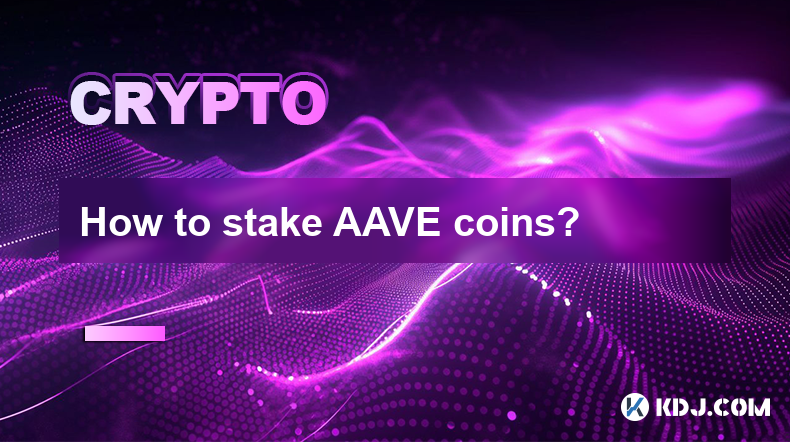-
 Bitcoin
Bitcoin $108,119.2441
0.67% -
 Ethereum
Ethereum $2,453.5972
0.96% -
 Tether USDt
Tether USDt $1.0002
-0.01% -
 XRP
XRP $2.1924
0.16% -
 BNB
BNB $649.9871
0.49% -
 Solana
Solana $151.5089
2.77% -
 USDC
USDC $0.9999
0.00% -
 TRON
TRON $0.2757
0.04% -
 Dogecoin
Dogecoin $0.1647
1.02% -
 Cardano
Cardano $0.5652
0.68% -
 Hyperliquid
Hyperliquid $38.7453
4.64% -
 Bitcoin Cash
Bitcoin Cash $495.2499
-0.34% -
 Sui
Sui $2.8252
3.32% -
 Chainlink
Chainlink $13.4477
2.27% -
 UNUS SED LEO
UNUS SED LEO $9.1413
0.72% -
 Avalanche
Avalanche $18.0719
2.01% -
 Stellar
Stellar $0.2392
0.47% -
 Toncoin
Toncoin $2.8737
1.04% -
 Shiba Inu
Shiba Inu $0.0...01159
1.37% -
 Litecoin
Litecoin $86.7133
1.04% -
 Hedera
Hedera $0.1488
0.33% -
 Monero
Monero $319.1619
1.53% -
 Polkadot
Polkadot $3.4308
2.24% -
 Bitget Token
Bitget Token $4.6349
-0.85% -
 Dai
Dai $1.0000
0.00% -
 Ethena USDe
Ethena USDe $0.9999
-0.03% -
 Uniswap
Uniswap $7.2389
2.16% -
 Aave
Aave $269.9171
5.12% -
 Pi
Pi $0.5335
-0.63% -
 Pepe
Pepe $0.0...09552
1.68%
How to stake AAVE coins?
By staking AAVE coins on exchanges or non-custodial wallets, holders earn passive income, participate in governance decisions, enhance network security, and contribute to the token's scarcity.
Dec 26, 2024 at 07:59 am

How to Stake AAVE Coins: A Comprehensive Guide
Key Points:
- Benefits of staking AAVE coins
Different methods of staking AAVE:
- Staking on exchanges
- Staking on non-custodial wallets
- Step-by-step guide to staking AAVE
- Security considerations for staking AAVE
Benefits of Staking AAVE Coins
Staking AAVE coins offers numerous advantages:
- Earning Interest: Stakers receive a portion of transaction fees collected on the AAVE lending platform, generating passive income.
- Governance Participation: Staked AAVE coins grant holders voting rights in the AAVE DAO (decentralized autonomous organization), allowing them to influence protocol decisions.
- Network Security: Stakers contribute to the security of the AAVE network by validating transactions and maintaining the blockchain's integrity.
- Scarcity Creation: Staking reduces the circulating supply of AAVE, potentially increasing its value over time.
Different Methods of Staking AAVE
Two primary methods of staking AAVE are available:
- Staking on Exchanges: Centralized exchanges like Binance and Coinbase offer custodial staking services, where users deposit their AAVE and receive rewards without managing the technical aspects.
- Staking on Non-Custodial Wallets: Users can stake AAVE directly on their wallets using the AAVE protocol or third-party platforms like Lido and Rocket Pool. This method provides greater control over staked coins and rewards.
Step-by-Step Guide to Staking AAVE
Staking on Exchanges
- Sign up for an account on a reputable exchange that supports AAVE staking.
- Transfer AAVE coins to your exchange wallet.
- Navigate to the staking section and select the AAVE option.
- Choose the desired staking period and amount, then confirm the transaction.
- Monitor your staking rewards, which are typically distributed at regular intervals.
Staking on Non-Custodial Wallets
- Create a non-custodial wallet that supports AAVE staking, such as MetaMask.
- Transfer AAVE coins to your wallet.
- Connect your wallet to the AAVE platform or a third-party staking provider.
- Select the desired staking period and amount, then approve the transaction.
- Monitor your staking rewards, which are typically distributed to your wallet address.
Security Considerations for Staking AAVE
- Research Reputable Platforms: Choose staking platforms with a proven track record and strong security measures.
- Consider Cold Storage: If staking non-custodially, store your private keys in a hardware wallet or cold storage device.
- Monitor Network Activity: Stay informed about protocol updates and potential security vulnerabilities that could affect your stake.
- Diversify Your Income: Don't rely solely on staking as a source of income. Diversify your portfolio with other investments.
FAQs
Q: What is the minimum amount of AAVE required to stake?
A: The minimum amount required for staking on platforms like AAVE varies. On exchanges, it may be as low as 0.1 AAVE, while on non-custodial wallets, the minimum may be higher.
Q: How long do I need to stake AAVE?
A: Staking periods vary depending on the platform. Exchanges offer both flexible and fixed-term staking options, while non-custodial wallets may require minimum lock-up periods.
Q: What are the risks of staking AAVE?
A: Staking involves certain risks, including potential loss of principal due to protocol failures or security breaches. Additionally, staked AAVE cannot be transferred or traded until the staking period expires.
Q: How often are staking rewards distributed?
A: Staking rewards are typically distributed daily or weekly, depending on the specific platform. Exchanges may also offer compounding options to maximize rewards.
Q: Can I withdraw my staked AAVE coins at any time?
A: The ability to withdraw staked AAVE coins depends on the staking platform. Flexible staking options allow users to withdraw their funds at any time, while fixed-term staking may impose penalties for early withdrawal.
Disclaimer:info@kdj.com
The information provided is not trading advice. kdj.com does not assume any responsibility for any investments made based on the information provided in this article. Cryptocurrencies are highly volatile and it is highly recommended that you invest with caution after thorough research!
If you believe that the content used on this website infringes your copyright, please contact us immediately (info@kdj.com) and we will delete it promptly.
- Bitcoin Wallets: Safeguarding Your Cryptocurrency Assets Like a New Yorker
- 2025-06-29 16:50:12
- Dogwifhat, Crypto Rally, and the Unexpected Challenger: A Meme Coin Mania?
- 2025-06-29 16:30:12
- Pi Network's Token Unlock: Sell-Off Fears or Future Fuel?
- 2025-06-29 16:30:12
- Altcoin Update: Vitalik Buterin on Major Changes in Governance and Digital Identity
- 2025-06-29 17:07:13
- Stablecoins, Crypto, and Ethereum: A 2025 Perspective
- 2025-06-29 17:30:12
- Altcoins in Focus: Remittix Steals the Show as Pepe Coin Gains Traction
- 2025-06-29 17:30:12
Related knowledge

How to customize USDT TRC20 mining fees? Flexible adjustment tutorial
Jun 13,2025 at 01:42am
Understanding USDT TRC20 Mining FeesMining fees on the TRON (TRC20) network are essential for processing transactions. Unlike Bitcoin or Ethereum, where miners directly validate transactions, TRON uses a delegated proof-of-stake (DPoS) mechanism. However, users still need to pay bandwidth and energy fees, which are collectively referred to as 'mining fe...

USDT TRC20 transaction is stuck? Solution summary
Jun 14,2025 at 11:15pm
Understanding USDT TRC20 TransactionsWhen users mention that a USDT TRC20 transaction is stuck, they typically refer to a situation where the transfer of Tether (USDT) on the TRON blockchain has not been confirmed for an extended period. This issue may arise due to various reasons such as network congestion, insufficient transaction fees, or wallet-rela...

How to cancel USDT TRC20 unconfirmed transactions? Operation guide
Jun 13,2025 at 11:01pm
Understanding USDT TRC20 Unconfirmed TransactionsWhen dealing with USDT TRC20 transactions, it’s crucial to understand what an unconfirmed transaction means. An unconfirmed transaction is one that has been broadcasted to the blockchain network but hasn’t yet been included in a block. This typically occurs due to low transaction fees or network congestio...

How to check USDT TRC20 balance? Introduction to multiple query methods
Jun 21,2025 at 02:42am
Understanding USDT TRC20 and Its ImportanceUSDT (Tether) is one of the most widely used stablecoins in the cryptocurrency market. It exists on multiple blockchain networks, including TRC20, which operates on the Tron (TRX) network. Checking your USDT TRC20 balance accurately is crucial for users who hold or transact with this asset. Whether you're sendi...

What to do if USDT TRC20 transfers are congested? Speed up trading skills
Jun 13,2025 at 09:56am
Understanding USDT TRC20 Transfer CongestionWhen transferring USDT TRC20, users may occasionally experience delays or congestion. This typically occurs due to network overload on the TRON blockchain, which hosts the TRC20 version of Tether. Unlike the ERC20 variant (which runs on Ethereum), TRC20 transactions are generally faster and cheaper, but during...

The relationship between USDT TRC20 and TRON chain: technical background analysis
Jun 12,2025 at 01:28pm
What is USDT TRC20?USDT TRC20 refers to the Tether (USDT) token issued on the TRON blockchain using the TRC-20 standard. Unlike the more commonly known ERC-20 version of USDT (which runs on Ethereum), the TRC-20 variant leverages the TRON network's infrastructure for faster and cheaper transactions. The emergence of this version came as part of Tether’s...

How to customize USDT TRC20 mining fees? Flexible adjustment tutorial
Jun 13,2025 at 01:42am
Understanding USDT TRC20 Mining FeesMining fees on the TRON (TRC20) network are essential for processing transactions. Unlike Bitcoin or Ethereum, where miners directly validate transactions, TRON uses a delegated proof-of-stake (DPoS) mechanism. However, users still need to pay bandwidth and energy fees, which are collectively referred to as 'mining fe...

USDT TRC20 transaction is stuck? Solution summary
Jun 14,2025 at 11:15pm
Understanding USDT TRC20 TransactionsWhen users mention that a USDT TRC20 transaction is stuck, they typically refer to a situation where the transfer of Tether (USDT) on the TRON blockchain has not been confirmed for an extended period. This issue may arise due to various reasons such as network congestion, insufficient transaction fees, or wallet-rela...

How to cancel USDT TRC20 unconfirmed transactions? Operation guide
Jun 13,2025 at 11:01pm
Understanding USDT TRC20 Unconfirmed TransactionsWhen dealing with USDT TRC20 transactions, it’s crucial to understand what an unconfirmed transaction means. An unconfirmed transaction is one that has been broadcasted to the blockchain network but hasn’t yet been included in a block. This typically occurs due to low transaction fees or network congestio...

How to check USDT TRC20 balance? Introduction to multiple query methods
Jun 21,2025 at 02:42am
Understanding USDT TRC20 and Its ImportanceUSDT (Tether) is one of the most widely used stablecoins in the cryptocurrency market. It exists on multiple blockchain networks, including TRC20, which operates on the Tron (TRX) network. Checking your USDT TRC20 balance accurately is crucial for users who hold or transact with this asset. Whether you're sendi...

What to do if USDT TRC20 transfers are congested? Speed up trading skills
Jun 13,2025 at 09:56am
Understanding USDT TRC20 Transfer CongestionWhen transferring USDT TRC20, users may occasionally experience delays or congestion. This typically occurs due to network overload on the TRON blockchain, which hosts the TRC20 version of Tether. Unlike the ERC20 variant (which runs on Ethereum), TRC20 transactions are generally faster and cheaper, but during...

The relationship between USDT TRC20 and TRON chain: technical background analysis
Jun 12,2025 at 01:28pm
What is USDT TRC20?USDT TRC20 refers to the Tether (USDT) token issued on the TRON blockchain using the TRC-20 standard. Unlike the more commonly known ERC-20 version of USDT (which runs on Ethereum), the TRC-20 variant leverages the TRON network's infrastructure for faster and cheaper transactions. The emergence of this version came as part of Tether’s...
See all articles

























































































